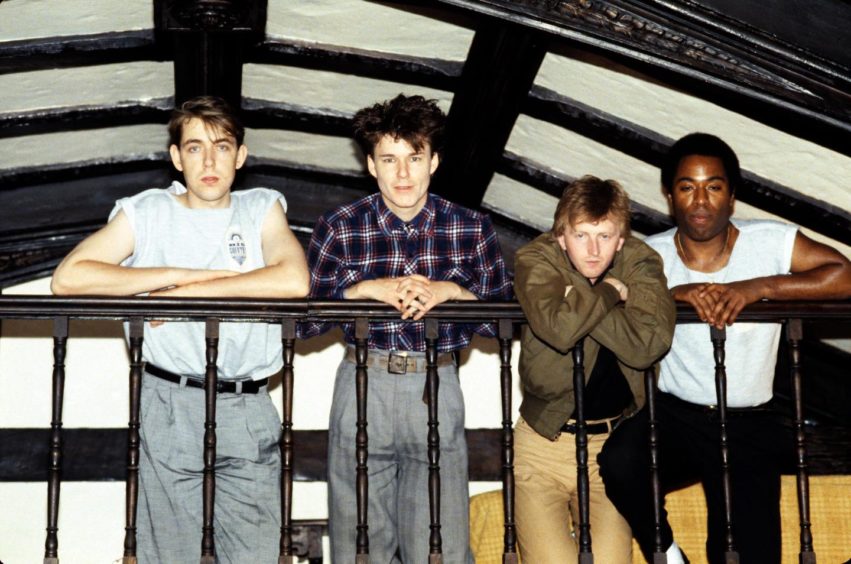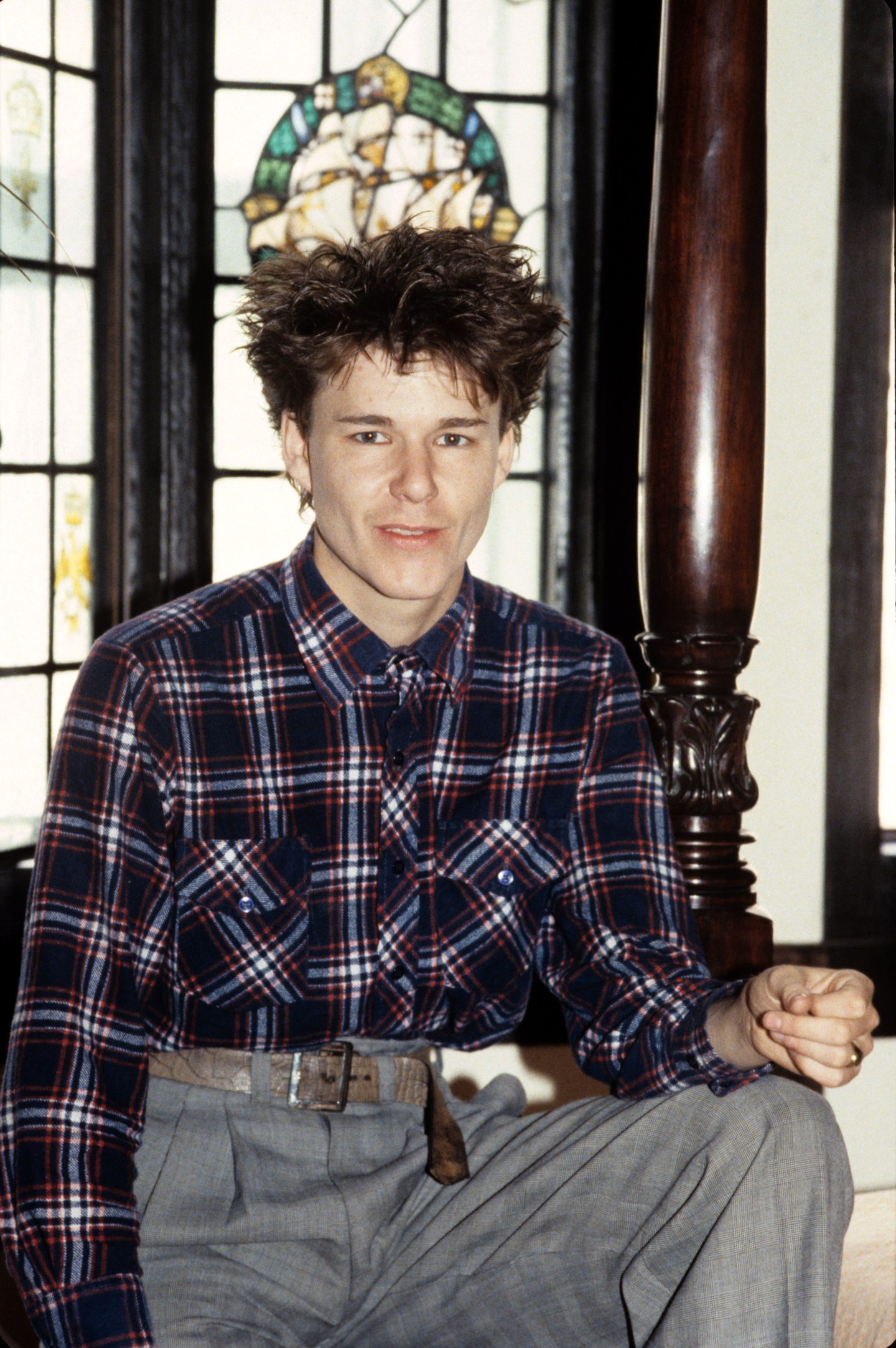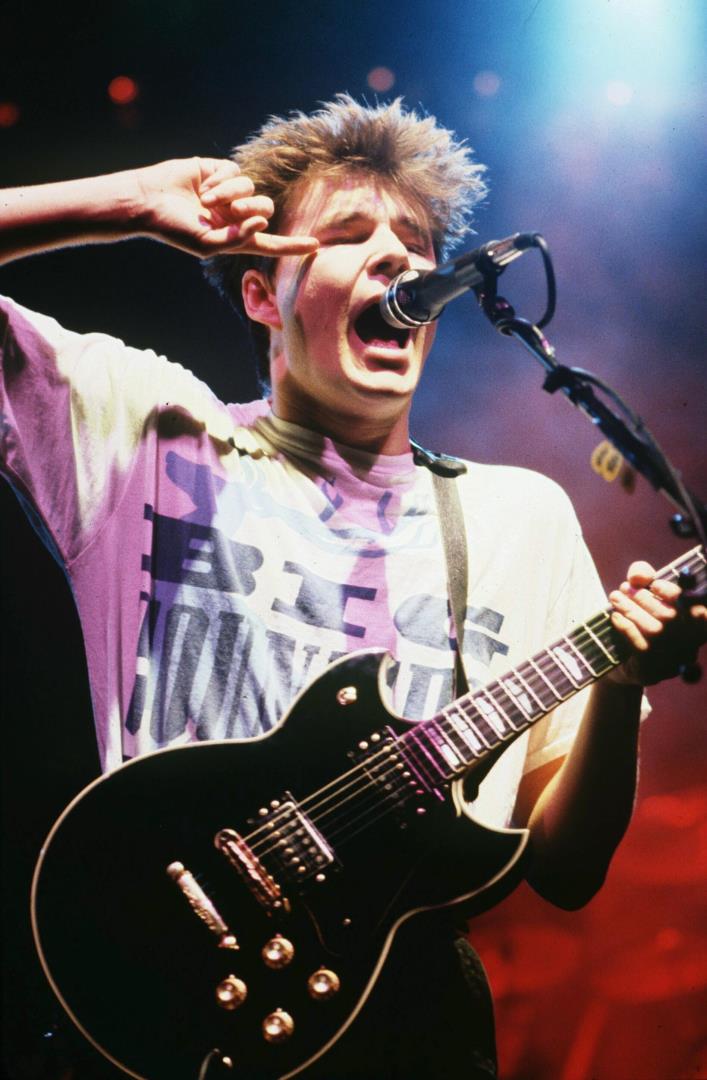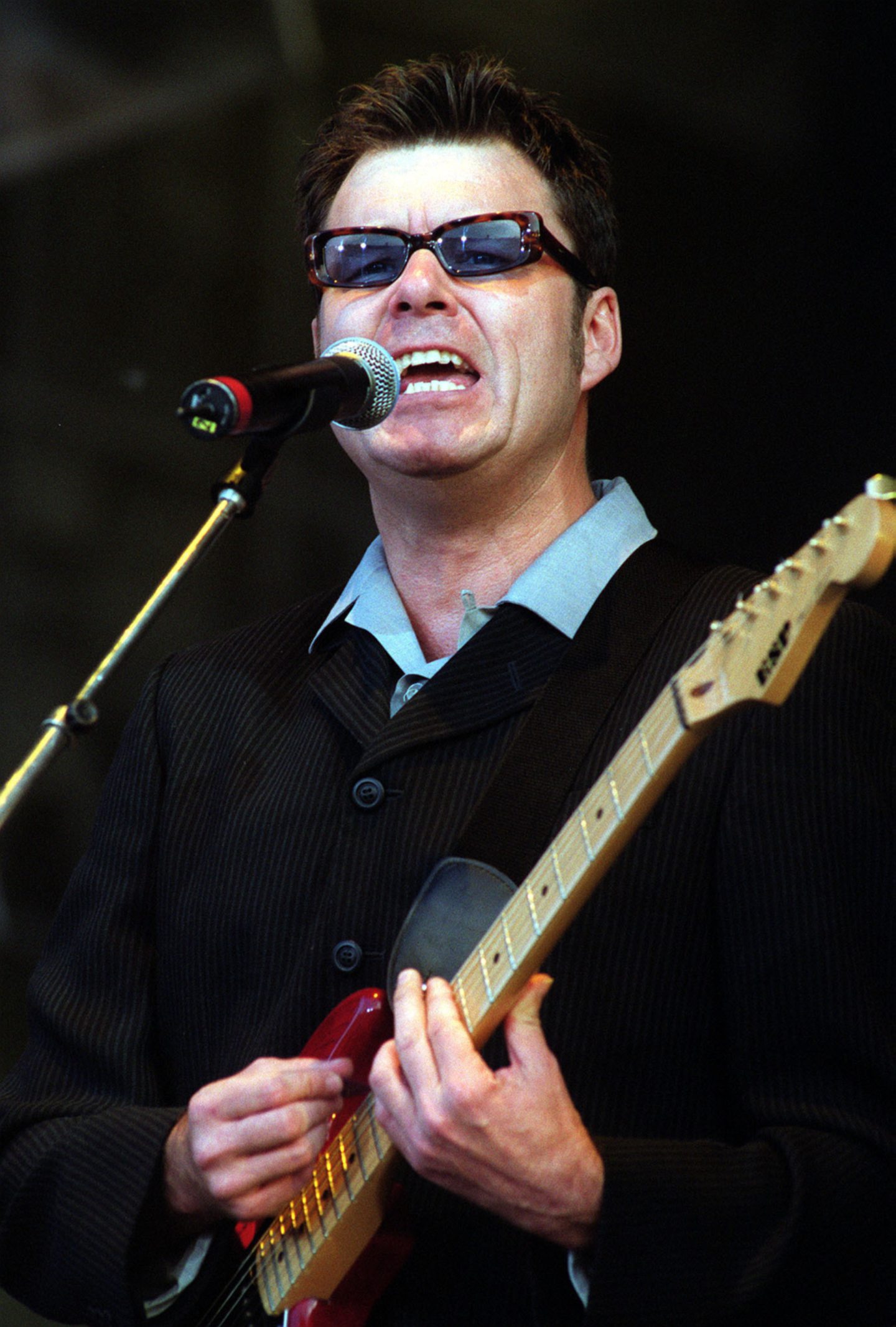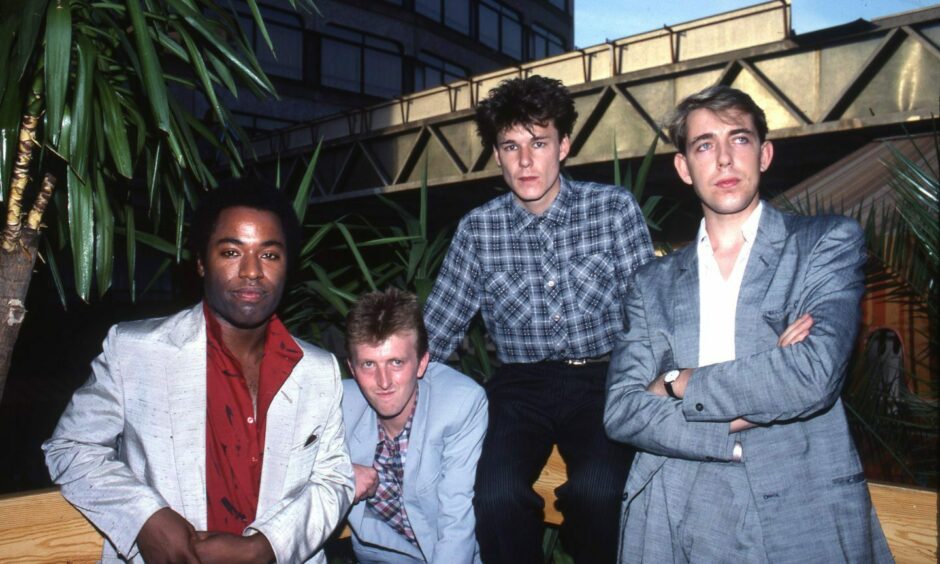
Big Country’s debut album, The Crossing, took the music world by storm after being released to critical acclaim on July 29 1983.
The 1983 album went on to sell more than two million copies worldwide and features four singles – two of which, Fields of Fire and Chance – were Top Ten singles in the UK.
The album peaked at Number 3 for three weeks and was rubbing shoulders with Michael Jackson’s Thriller, David Bowie’s Let’s Dance and Labour of Love by UB40.
The Crossing made them household names on both sides of the Atlantic and was described by The Washington Post as the most stunning debut by a rock band in 1983.
The cassette tape version included the bonus tracks Angle Park and Heart & Soul, as well as extra 12-inch mixes of two singles, In A Big Country and Fields of Fire.
How it all began for Stuart Adamson and the boys…
Stuart Adamson formed Big Country in Dunfermline in 1981, having already been a successful musician for a number of years since he put together The Skids in 1977.
Adamson left The Skids in 1981 after disagreements with Richard Jobson and hooked up with guitarist and long-time friend Bruce Watson and started writing songs.
Adamson and Watson would practice in a community centre in Dunfermline armed with guitars, a drum machine, keyboards and four-track recorder.
An early Big Country line-up featured Clive Parker and brothers Pete and Alan Wishart but they were soon replaced by bassist Tony Butler and drummer Mark Brzezicki.
Initially driven by a shared vision of widescreen guitar melody, harmony and lyric, the classic Big Country sound was described by some cynics as sounding like guitars going through a bagpipe pedal.
Or as Paula Yates once famously asked Adamson: “How do you get your bagpipes to sound like guitars?”
It was a unique sound, though, which marked them out as different from the rest.
Big Country started working on their debut album with legendary producer Chris Thomas but he really wasn’t on the same wavelength as the group.
Big Country’s debut single, Harvest Home, – one of the very first songs written in that community centre 12 months earlier – limped into the chart at just 91 in September 1982.
Steve Lillywhite, who had just finished recording U2’s breakthrough album, War, was then called in to work on Fields Of Fire, Big Country’s second single, which made the Top Ten on its release in February 1983.
He said: “Chris Thomas’s recordings were flat and uninteresting and we managed to get something exciting going – and from that Stuart went off and wrote In A Big Country.
“I remember playing Bono the demo of In A Big Country, I was so absolutely knocked out by it.
“I felt very honoured to have inspired that.”
What did Stuart Adamson think of The Crossing album?
The Crossing went on to spend 80 weeks in the UK charts and it is an album packed from start to finish with glorious guitar anthems straight from the fuse being lit by In A Big Country.
The band were nominated for two Grammy awards for Best New Group and Best Single for In A Big Country, which peaked at Number 17 on the Billboard Hot 100 in the US.
Adamson’s thoughts on The Crossing album were as lyrical as his poetic lyrics.
“The music I felt wasn’t like the music I had grown up hearing, or rather, not like any one of them.
“It was all of them jumbled up and drawn into something I could understand as mine,” he said.
“I found I could play this music and connect the guitar directly to my heart. I found others who could make the same connection, who could see the music as well as play it.
We learned how we are together and how we come apart. Life happens.”
Stuart Adamson
“The sound made pictures. It spread out wide landscapes. Great dramas were played out under its turbulent skies.
“There was romance and reality, truth and dare. People being people, no heroes, just you and me, like it always is.
“The music told stories, little stories. Lands were not conquered, treasure was left in the tombs, the magic was in the everyday.
“We learned how we are together and how we come apart. Life happens.”
From playing small clubs early in the year, Big Country were suddenly moving on to big halls and eventually a European and a full-scale US Tour by the end of 1983.
The Crossing album was life-changing
Long-time fan Andy Inkster, a voice of authority on Big Country, said the world called and the band found themselves hotly in demand as The Crossing’s reputation grew.
He said: “The packaging was clever with the initial release seeing a red and a blue sleeve on record store shelves in the UK, with a green sleeve to follow eight months later.
“The outer and inner sleeve imagery a perfect accompaniment to the adventurous nature of the strongly guitar-driven music in a climate where synth-pop was taking hold and staking its claim.
“Big Country flew in the face of the trend by producing an album so distinct that you couldn’t help but sit up and take notice.
“It is still revered today for its musicianship, songwriting and storytelling.
“There isn’t a weak song on it.
“As a young fan on the other side of the world in 1983, I can honestly say that The Crossing changed my life.
“As well as the album opening doors for the band to take their music to the world, it opened doors for fans as well, as lifelong friendships have been forged on the back of this truly unique band and their music.”
Subject matter on The Crossing album includes loss, separation, dehumanisation and the 1745 Jacobite Rebellion in The Storm, which “broke upon us with fury and flame”.
So what is the best song on the 10-track album?
Inwards? Chance? Lost Patrol? Close Action?
Adamson and Watson’s dual guitar work on the euphoric Fields of Fire?
“I can’t pick a clear favourite song,” said Andy.
“They all mean a lot for different reasons.
“This is what an album of genuine quality looks like.
“It’s impossible to choose.”
Triumph and tragedy but dreams stay with you…
Second album Steeltown (1984) debuted at Number 1 in the UK.
The Seer (1986) included the band’s biggest UK hit, Look Away, which reached Number 7 in the UK singles chart and spent a week at the top of the Irish singles chart.
Peace In Our Time (1988) followed before the fifth studio album, No Place Like Home (1991), took the Fife band’s total record sales to well over five million copies.
Further studio albums Buffalo Skinners (1993) and Why The Long Face (1995) were accompanied by supporting The Rolling Stones’ Voodoo Lounge European tour.
In 1998 they were again invited to open for the Stones on their Bridges To Babylon tour of Europe, and Driving To Damascus (1999) would be the last album they recorded together with Stuart Adamson at the helm before he took his own life in 2001.
Bruce Watson and Mark Brzezicki lead a line-up of the band in 2023, which is currently touring the 40th anniversary of The Crossing to sold-out venues at home and abroad.
Adamson’s lyrics from the 1983 album have never lost their impact.
“In a big country dreams stay with you.
Like a lover’s voice fires the mountainside.”
And 40 years on, they still do.
